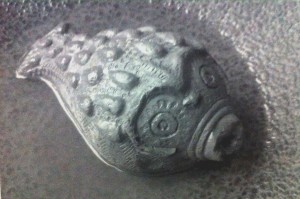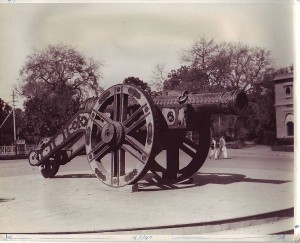ARMS AND AMMUNITION OF LAHORE
A WORLD CENTRE OF MANUFACTURE
A forgotten story
Sultan Mahmud Ghaznavi set the pattern by naming the newly founded city by the name of Mahmudpur, over the remains, or besides the remains, or even on a new site, of the so called Laur, the name and pronounciation of which is still uncertain to this day. We do know that the area was called Mandkukar before that, and it was a market of chickens, founded by the exiled giant of Bashan, known as LA-NGA the nau-guzza of Lahore. We are also told by the historian Baihaqi (in the known volumes rest lost), how Sultan Mahmud gave the task to Malik Ayaz, to make Lahore, one of the grandest city of all times. In many quarters Ayaz is crediting as having founded Lahore, and the love for him is so great in the hearts of the people of Lahore, that they still celebrate his anniversary, and have made a new mausoleum for him in the narrow lanes of the city.

Of course Lahore is a city of culture but there is so much more to it. One aspect not usually written is that it was a world centre for manufacture of arms and ammunition. Baihaqi gives us a list of about 200 different professions of whose specialists were invited to make Lahore, Lahore. And the most important ones it seemed were the gunsmiths who came to Lahore from far away, including Ghazni, the capital of Sultan Mahmud. To this day we have streets in Lahore named after gun-makers (banduk-sazs), bow-makers (teer-garan), and sword makers (talawaran). The swords of Lahore were world famous and people used to come from all over the world to buy swords. So does the industry of bows and arrows, and guns. Many swords and guns used by Mughal Kings and Princes were made in Lahore. Dara Shikoh’s sword was made in Lahore as attested by the inscription on it, to this day. The swords were continuously manufactured till the British banned their making in Lahore. There are swords in our house made in Lahore in the times of the late Mughals, as well as British times, in the Landa Bazaar, Lahore. A sword was presented to my cousin’s husband, also made in Landa Bazaar, Lahore. It seems casting was going on in the Serai of Sultan, the casting area of Lahore.

Lahore was famous for its LOHARS, blacksmiths, and the mohalla of Lohars exist in the city to this day. On such famous gunsmith was SHAH NAZEER, who was gunsmith to Mir Mannu, the Governor of Lahore. Ahmad Shah Abdalli was impressed with the manufacture capacity of Lahore, and ordered two cannons here, in 1757 AD. Made by Shah Nazeer, one got lost in a river bed, the other passed through many hands. It was called Zam-zamah, and made famous by Rudyard Kipling, as the gun, on which his character Kim sat in Lahore. At a dimension of 14 feet and a 4 1/2 inches, and a bore of 9 1/2 inches, it is considered as the biggest cannon made in Lahore. We are told that for its manufacture, a utensil each, came from all the houses in Lahore, some of which were volunteered, and some which were a result of order.

Lahore was also a city of bombs, or hand grenades. At most diggings, remains of ATISH-HUKAS or hand bombs come out. Many of these are highly decorated, and a certain sign is on them, signifying DANGER symbol of that period. But some are very imaginatively shaped in FISH form, and these are beautiful bombs to behold. Museum pieces in all ways. Horse riders used to throw them on the gate way of Forts, or those were throw from the ramparts of forts to attackers below the walls. Many times Lahore was on the brink of falling and held itself against attack. At times through negotiation Lahore was saved. And at other times Lahore was ransacked, and left to the vultures. Lahore was a deserted city, till the Syed brothers inhabited it again in 1420 AD. So Lahore has seen it ups and downs. And when this activity was banned in Lahore,the gunsmiths of Lahore migrated to the Tribal belt on the Afghan border, where they still manufacture arms and ammunition to this day.
It is said that Lahore was named after the discovery of Iron, as ‘Loha’ and ‘Lohars’ and that is why it was called Loharpur. Another funny tit-bit of history is that Changez Khan himself was a blacksmith, and his children were ‘Lohars’.The casting was done in its entire history and even today the Loha mandi near Sultan ke Serai does the same.

Culture requires defense too